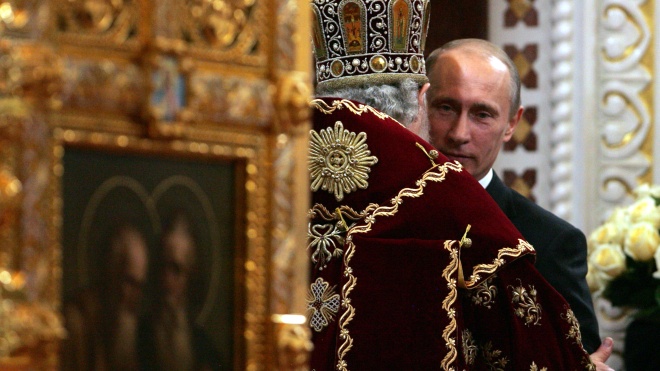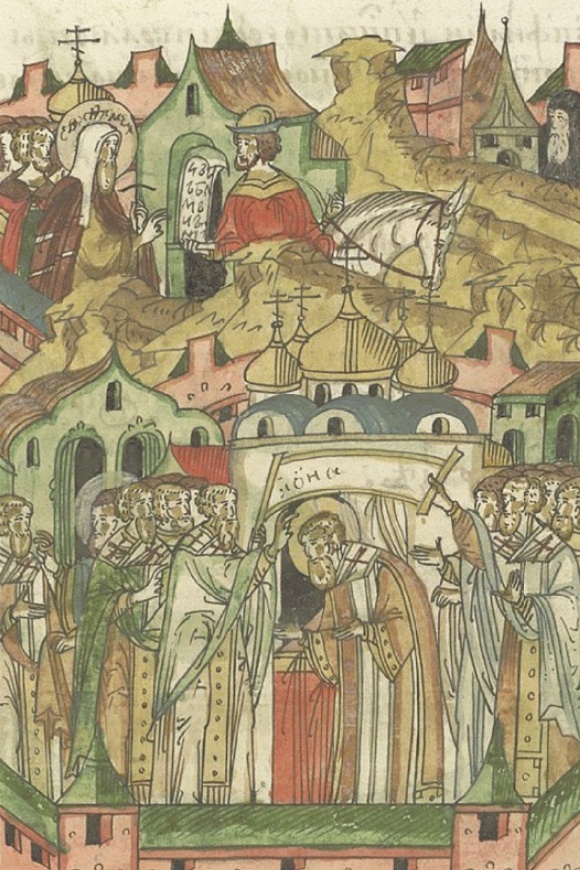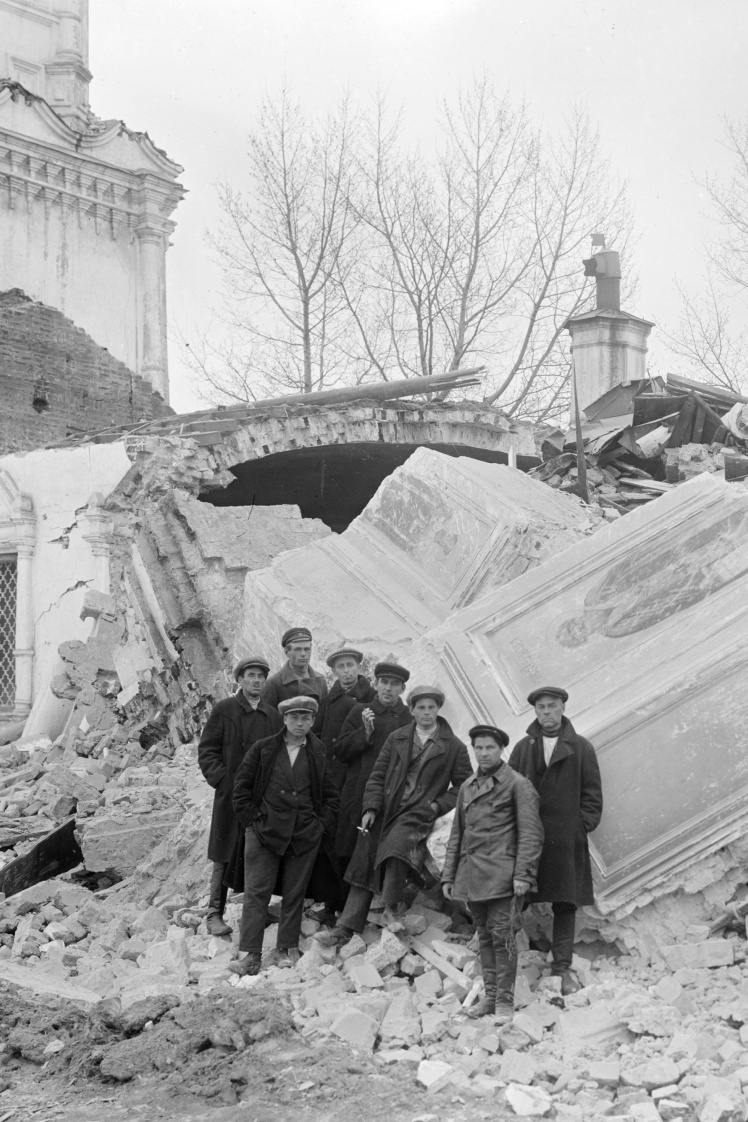The history of the Russian Orthodox Church began in the middle of the 13th century. Then the metropolitans of Kyiv moved their residence from Kyiv destroyed by the Mongol-Tatars to Volodymyr-on-Klyazma. Church hierarchs were subordinated to the Ecumenical Patriarchate of Constantinople, but retained the title of Metropolitan of Kyiv and All Rus. They became more and more dependent on the rulers of the Mongol-Tatar state of the Golden Horde, even the appointment of new metropolitans was additionally approved by the Mongol khans. In 1261, the Sarai Orthodox Diocese was founded in the Horde capital Sarai-Batu. Its leaders became the main mediators in the relations of the rulers of the Horde with the vassal Russian principalities and Byzantium.
In the 15th century, both the Golden Horde and Byzantium gradually declined. But the small Moscow principality, becoming the center of collecting tribute for the khan from all the north-eastern principalities of the former Kyivan Rus, on the contrary, strengthened. It was to Moscow that the church leadership moved from Volodymyr. And its metropolitans tried in every possible way to get rid of dependence on the Patriarch of Constantinople, to whom the Kyiv Metropolitanate continued to be subordinate. In 1448, the Moscow Church, with the support of local rulers, unilaterally declared independence and formed its own Moscow Metropolis. This was not recognized either in Constantinople or in other centers of Eastern Orthodoxy.
In December 1448, the Moscow Cathedral ordained Ryazan bishop Ion as a metropolitan without the permission of the Ecumenical Patriarchate. Illustration from a Russian chronicle of the 16th century.
Wikimedia / «Бабель»
The Moscow Church was in such an illegal situation for almost a century and a half. During this time, it increasingly became a state tool and even came up with a propagandistic concept of Moscow as the Third Rome for the Moscow rulers. Its essence was that after the fall of Rome, and later Constantinople, Moscow was to become a new political and spiritual center. This concept formed the basis of the imperialist policy of Muscovy, and then Russia, for the following centuries.
At the end of the 16th century, the Patriarchate of Constantinople was in a difficult position under the rule of the Ottoman Empire. The Moscow rulers decided to take advantage of this in order not only to legalize the independence of their church, but also to raise its status from metropolitan to patriarchy. In the summer of 1588, the newly elected Patriarch of Constantinople Jeremiah II came to Moscow to ask for money for the needs of the church. And the then ruler Boris Godunov presented him with an ultimatum to recognize the Moscow Patriarchate. The negotiations dragged on for half a year, and the local church hierarchs didnʼt participate in them at all. During this time, Jeremiah II was kept in Moscow. He himself was ready to agree to become the patriarch in Muscovy, tired of endless troubles in Constantinople. But the maximum that Godunov offered him was a residence in the "ancient Orthodox capital" Volodymyr-on-Klyazma.
The boyars and the clergy persuade Boris Godunov to become the Tsar of Moscow. Illustration by Boris Chorikov from the book "Russian History in Pictures" from 1836.
Getty Images / «Babel'»
At the beginning of 1589, Jeremiah agreed to all the conditions and consecrated the candidate chosen by the king as patriarch. Only after that he was released to Constantinople. There, Jeremiah convened a council that approved the establishment of the Moscow Patriarchate. A corresponding letter with 106 signatures of the Eastern hierarchs was sent to Moscow. However, modern graphological analysis has shown that at least 66 of these signatures are forged.
The Moscow Church became a patriarchate, but didnʼt get rid of its dependence on tsarist power. At the beginning of the 18th century, the first Russian emperor Peter I went even further. He abolished the patriarchy, and turned the church essentially into a state ministry. The main church body became the Holy Synod of the Russian Orthodox Church. He acted under the supervision of a secular official, the chief prosecutor, who was appointed by the emperor. Since then, the head of the Russian state has received the official status of the head of the church.
Mykola Nevrevʼs 1903 painting "Peter I in front of his mother, Tsarine Natalia." On the left, the Moscow Patriarch Adrian is depicted on the canvas. After his death in 1700, Peter I abolished the patriarchate.
Wikimedia / «Бабель»
The Russian Orthodox Church was a state office for almost 200 years. And this, of course, did not please its hierarchs. Therefore, during the February Revolution of 1917, the church supported the overthrow of the Russian monarchy and in the same year restored its own patriarchate. The new patriarch received the title "Patriarch of Moscow and All Russia". After his death in 1925, the church had no choice but to elect a new patriarch.
All the cards were confused by the Bolsheviks, who managed not only to capture, but also to keep power. They began their attack on the church with atheistic propaganda. Later, large-scale repressions were launched against the clergy. Almost all the hierarchs and a significant part of the priests were either shot or sent to prison or labor camps. Temples were closed and destroyed, often granaries, clubs or shops were opened in their premises. The church itself was not completely banned, but it was subordinated to the state, or rather to the special services, as much as possible.
Granary in the church premises, 1930. A church blown up by the Bolsheviks in Nizhniy Novgorod, 1936.
Getty Images / «Babel'»
In 1941, Germany attacked the USSR. In the occupied Soviet territories, the Germans promoted the revival of church life in order to attract the population to their side. Stalin could not simply give such a trump card to Hitler, so he ordered to find church hierarchs still alive in the camps and in 1943 chose a new patriarch from among them. And in his title, for propaganda purposes, Russia was replaced by Rus. The heads of the Russian Orthodox Church still bear the title "Patriarch of Moscow and All Rus".
Consecration of Patriarch Serhii, chosen by Stalin, on September 12, 1943.
Getty Images / «Babel'»
The church came under even more total state control than under Peter I. Its activities were controlled by the Ministerial Council for Religious Cults. The leaders of this Council had much wider powers than the chief prosecutors of the Synod in the Russian Empire. In addition, the church in the USSR was under the increased control of the special services. All applicants for high church positions were coordinated with the KGB. And after the declassification of the archive, it became known that the Soviet special services not only controlled, but also recruited agents from among the leaders-hierarchs of the Russian Orthodox Church. For example, the current head of the Russian Orthodox Church, Partiarch Kirill, is a former KGB agent. Swiss journalists found out that in the 1970s, under the pseudonym “Mikhailov”, he collected information about members of the World Council of Churches in Geneva and tried to turn them against the United States and NATO.
Metropolitan Kirill with Putin in Kaliningrad, 2006. Kirill will become Patriarch in 2009.
Getty Images / «Babel'»
In the modern Russian Federation, the Russian Orthodox Churchʼs ties with the special services havenʼt disappeared, and with Putinʼs coming to power, they even intensified. Even American analysts from the Institute for the Study of War wrote that the Moscow Patriarchate contributed to the occupation of Crimea and the invasion of Donbas in 2014. And Ecumenical Patriarch Bartholomew directly called the Russian Orthodox Church responsible for Russiaʼs war against Ukraine. Russia also uses the church to incite conflicts in other countries, such as Montenegro.
Priests among the Russian military, who surrounded part of the Ukrainian border guards in Balaclava, Crimea. March 1, 2014.
Getty Images / «Babel'»
The story of the Russian bishop Flavian three years ago is illustrative. The FSB tried to recruit him several times, but he refused. Then a drug laboratory was "found" in his apartment. Later, embezzlement and even the organization of a contract killing were added to the charges. Patriarch Kirill did not intercede for Flavian — on the contrary, he removed him from ministry and "sent him to rest" in a remote dilapidated monastery. In the end, Flavian managed to leave for Britain. He recalls how he turned to the second person in the Russian Orthodox Church for help — the head of affairs of the Moscow Patriarchate, Metropolitan Dionysius, and he answered: "Why didnʼt you cooperate [with the state]? Why do you have this trouble? Everyone cooperates. So itʼs your own fault. Now write a request for rest because of health."
Since the beginning of the full-scale Russian invasion, representatives of the ROC-controlled Ukrainian Orthodox Church of the Moscow Patriarchate often cooperated with the occupiers. Only at the end of October 2022, the SBU found 33 agents-informers and fire-correctors among them.
Subsequently, the SBU conducted searches in the Kyiv-Pechersk Lavra, in monasteries in Transcarpathia, in the Mukachevo Diocese, in the Ivano-Frankivsk Diocese, in the Pochaiv Theological Seminary, in the Ternopil Diocese, and in other monasteries and churches of the UOC MP. There they found pro-Russian propaganda manuals on how to deny Russian aggression and glorify the "Russian world", copies of documents of the occupiers, as well as correspondence with Moscow curators. The priests of the UOC MP still refuse to leave the Kyiv-Pechersk Lavra, even though the term of the lease agreement expired on March 29.
Pro-Kremlin literature and Russian passports discovered during searches in one of the dioceses of the UOC MP, December 2022.
ssu.gov.ua / «Бабель»
Translated from Ukrainian by Anton Semyzhenko.
Russians spread propaganda even under the cover of a church. So better read and support independent journalism: 🔸 in hryvnia 🔸 in cryptocurrency 🔸 via Patreon 🔸 or PayPal: [email protected].




